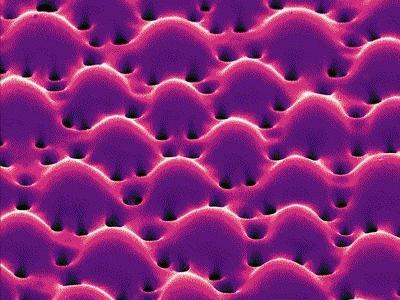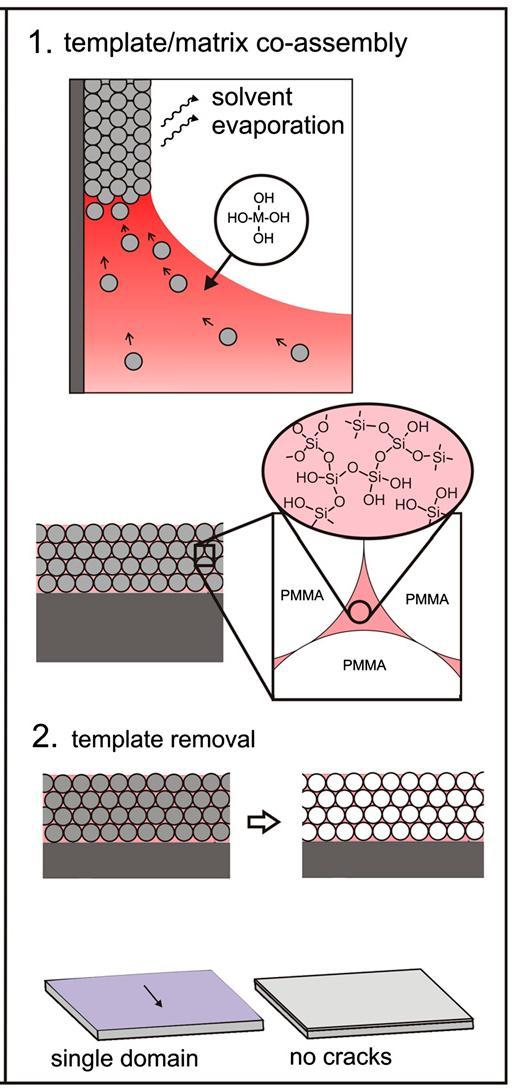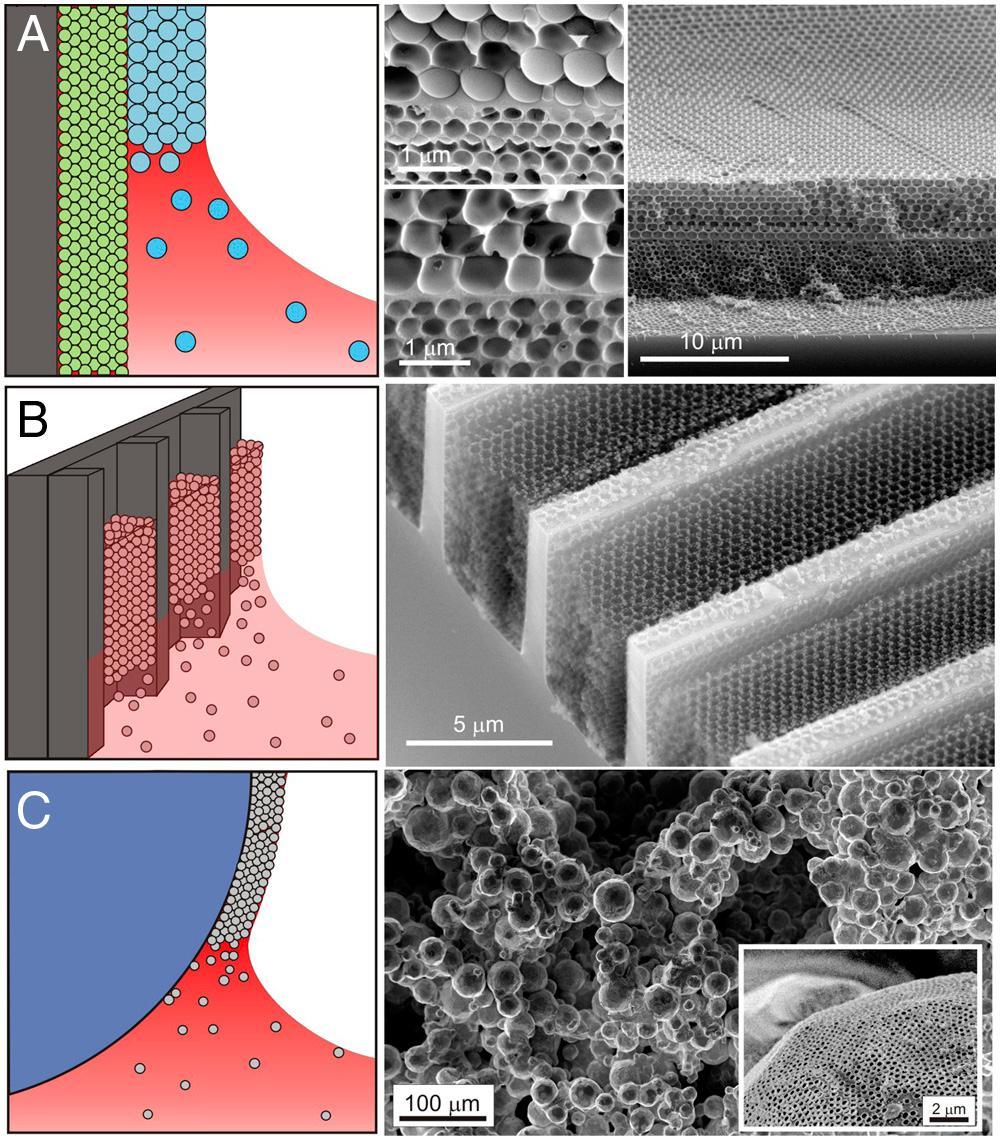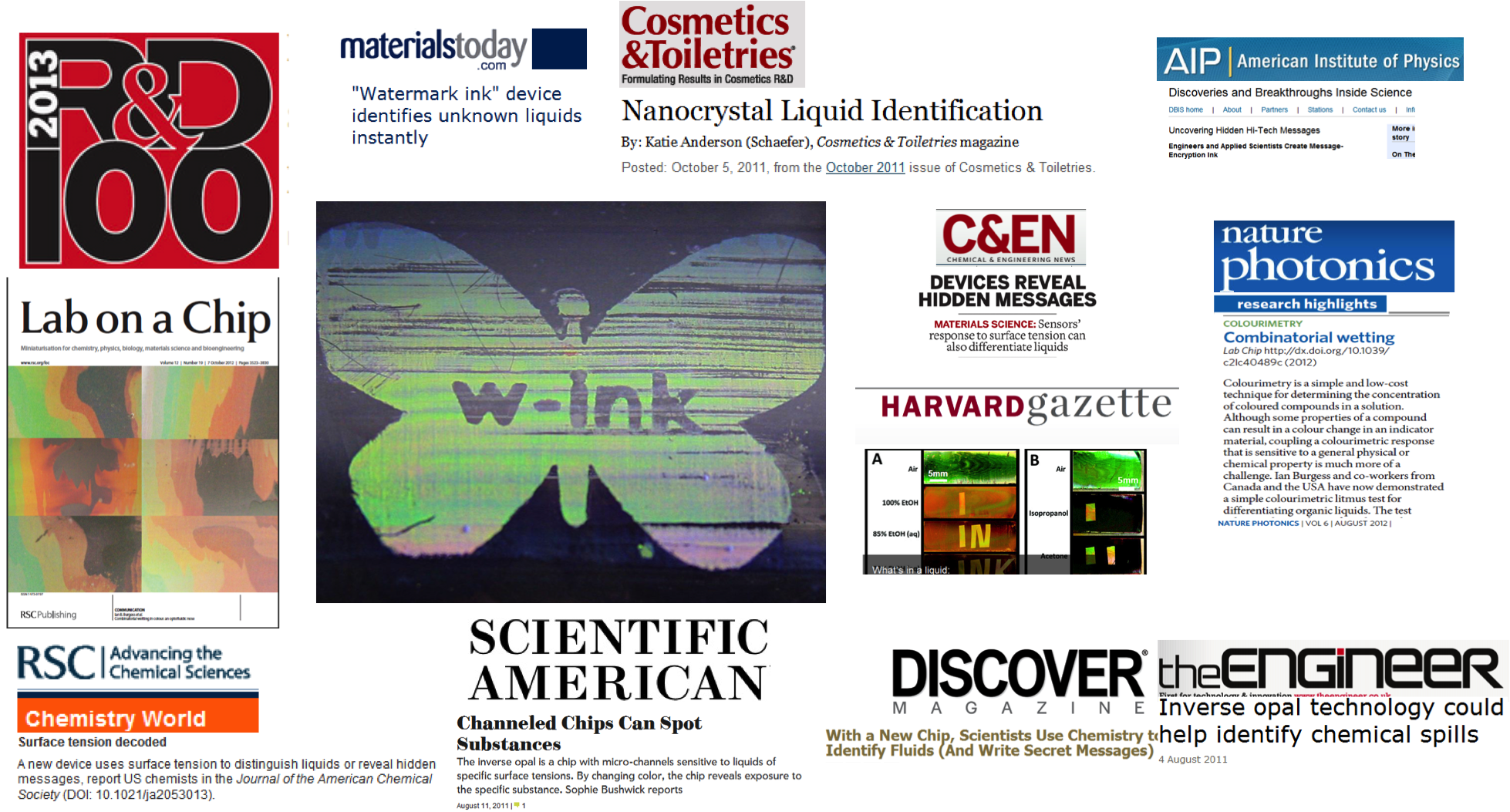The most finely tuned, rapidly responsive, and precisely directed optical systems currently known can be found on the surfaces of living organisms. Studies of brittlestars’ tunable microlenses, sea sponges’ optical fibers, butterflies’ and beetles’ intense colors, and squids’ nearly perfect camouflage have revealed 3D architectures so intricately patterned down to the nanoscale that the topography itself controls the wavelengths and direction of reflected light.
Bio-inspired Optics
Of particular interest to us, many of these architectures constantly reconfigure and/or control pigment movement to adjust their optical behavior in response to a changing environment. In conjunction with our collaborators’ investigations of the biological mechanisms, our group is developing bottom-up self-assembly techniques that allow us to create comparably elaborate yet tunable hierarchical photonic structures, and integrating these into the design of a new class of dynamic, responsive optical materials, such as self-adapting energy-saving window coatings that adjust their transparency in response to varying temperature, self-reporting sensors, and photonic encryption systems.
- 1 of 4
- »
Spotlight summary: The Brighter The Better!, Virtual Journal for Biomedical Optics, December 23, 2014.
Butterfly's colorful trick of the light recreated in the lab, Physics World, October 10, 2014.
Lifelike cooling for sunbaked windows, Wyss Institute press release, July 30, 2013.
"Watermark Ink" device wins R&D 100 Award, Harvard press release, July 8, 2013.
Bioinspired fibers change color when stretched, Harvard press release, January 28, 2013.







